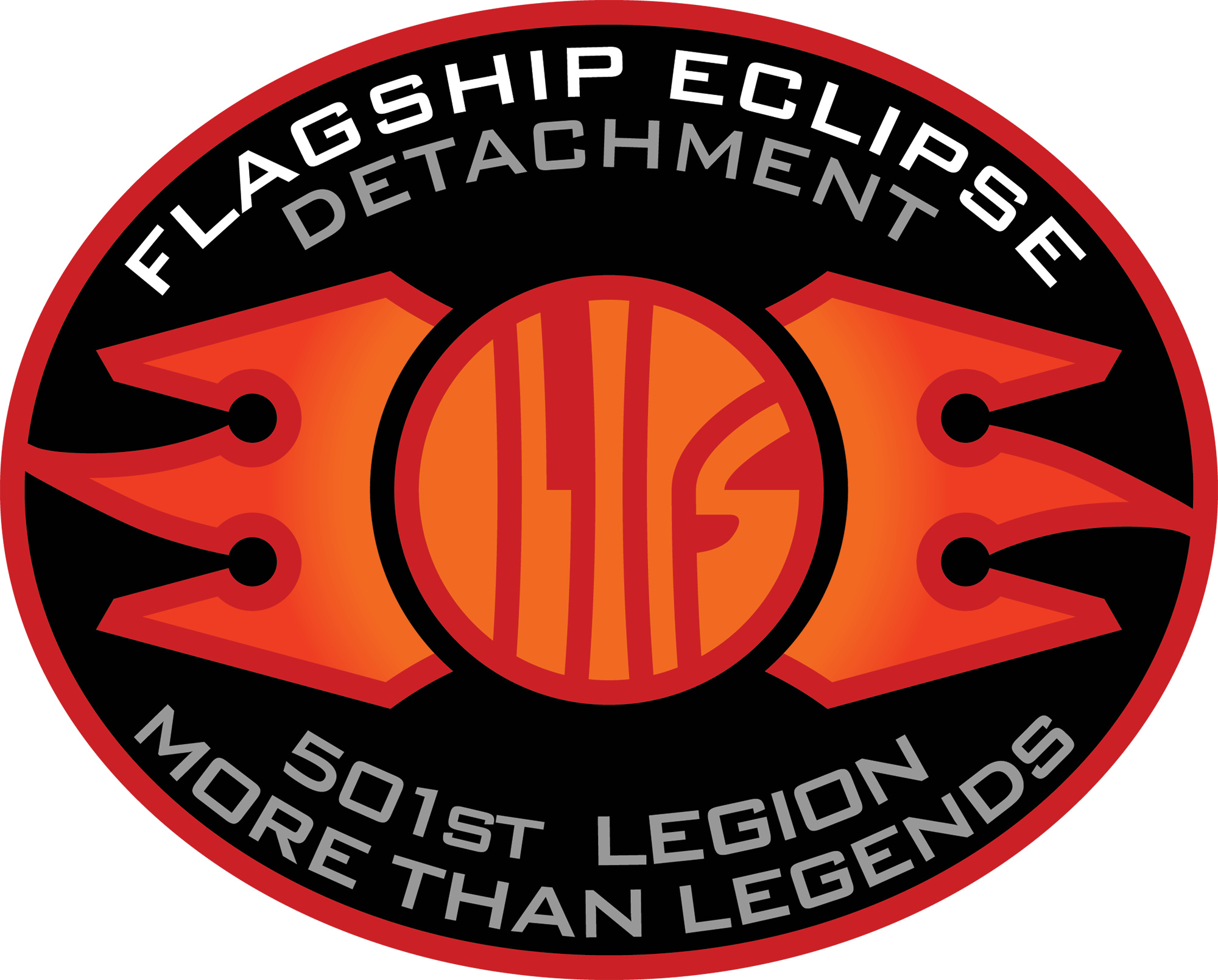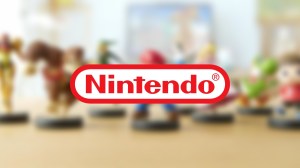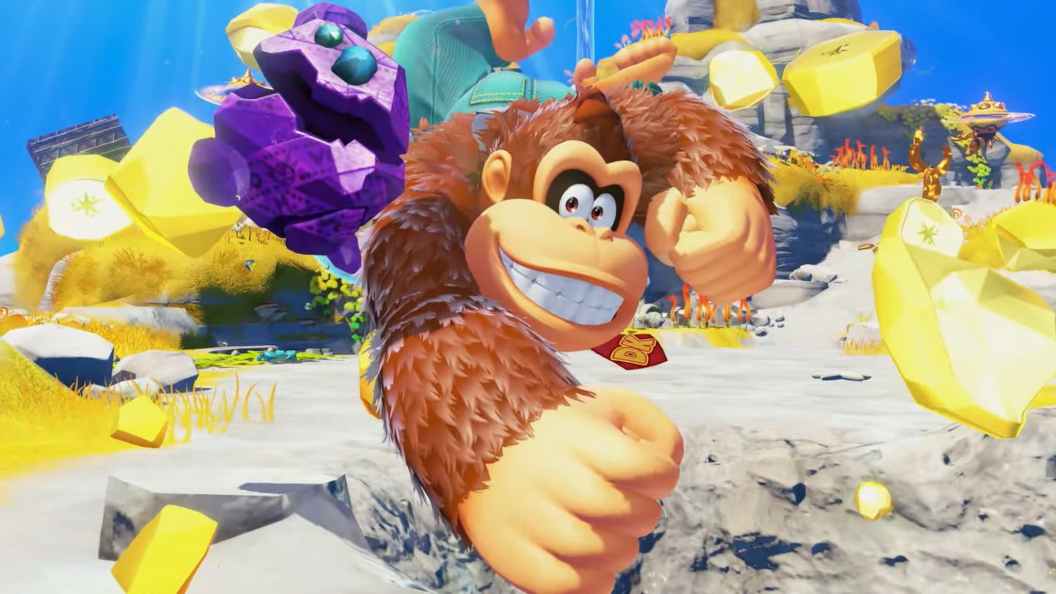
It’s hard to overstate what a big deal Donkey Kong was in the ’90s. The release of Donkey Kong Country in 1994 reimagined the character, making him an icon that may have eclipsed even Mario and Link for a few solid years. Unfortunately, the character has never quite reached the heights of the original SNES trilogy. He’s appeared in great games like Donkey Kong Country Returns, but he usually plays second banana when compared to Nintendo’s biggest icons. That could change next month with the release of Donkey Kong Bananza on Nintendo Switch 2.
I got a chance to go hands-on with Donkey Kong Bananza back in April, at the big Nintendo Switch 2 media event. While I enjoyed my time with the game during that session, it easily got overshadowed by other big games for the system, most notably Mario Kart World and Metroid Prime 4: Beyond. In the limited amount of play time offered, it was hard to get a good grasp for the game and its overall concept early on. It certainly didn’t help that Nintendo was keeping a lot of key details quiet. Ahead of launch, I got a chance to spend a much more significant amount of time with Donkey Kong Bananza, and it has me far more excited than I was before.
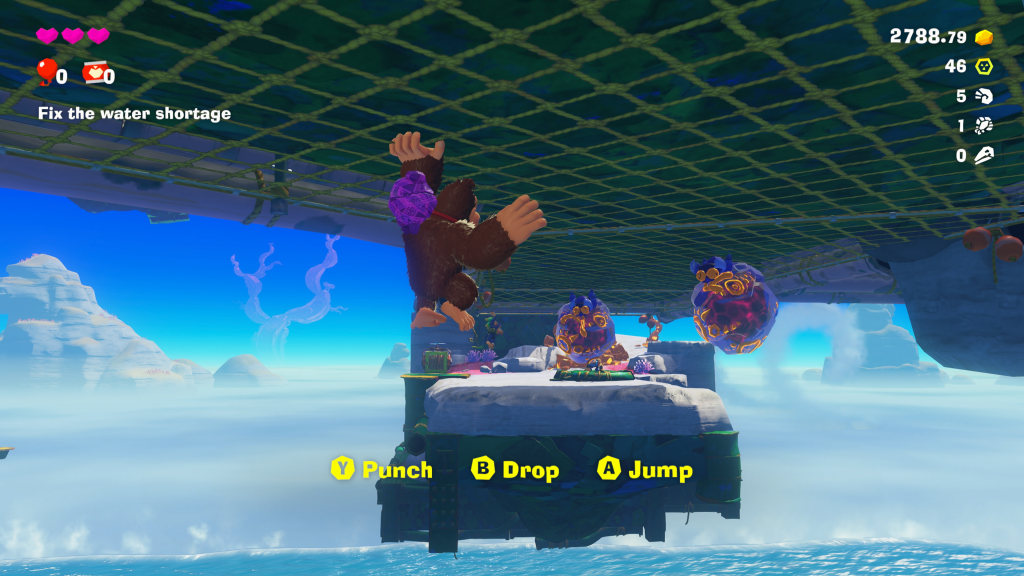
When I initially played Donkey Kong Bananza, one of the first things I noticed was that the game felt quite a bit like Super Mario Odyssey. In what has become a standard practice for Nintendo, the company had largely kept quiet regarding the developer’s identity. However, the company confirmed during my latest hands-on preview that Bananza is being handled by the Super Mario Odyssey team. Even if that hadn’t been evident before, the second preview helped to establish just how connected these two games are. There’s a pretty big throughline that connects them, and that’s the character Pauline. While Pauline is a lot different in Bananza than she was in Odyssey, it’s clear that this is the same character, though significantly younger. This new game might even serve as her origin story.
Outside of the opening sequence, most of Donkey Kong Bananza seems to take place in a strange world far below Ingot Isle. While mining for Banandium Gems, Donkey Kong finds himself plunged into the world below thanks to a group of villainous new Kongs known as the Void Company. Pauline’s circumstances have not been fully revealed, but the early stages of the game see her transformed into a small purple creature known as “Odd Rock.” The game’s Lagoon Layer section has the two characters working together, with DK seeking bananas and Odd Rock desperate to return to the surface. Their journey together leads them to the Kong Elder. The Elder tells them that their wishes can be granted if they reach the planet’s core. After helping Odd Rock change back into Pauline, Elder Kong shows her that she can help DK through her singing.
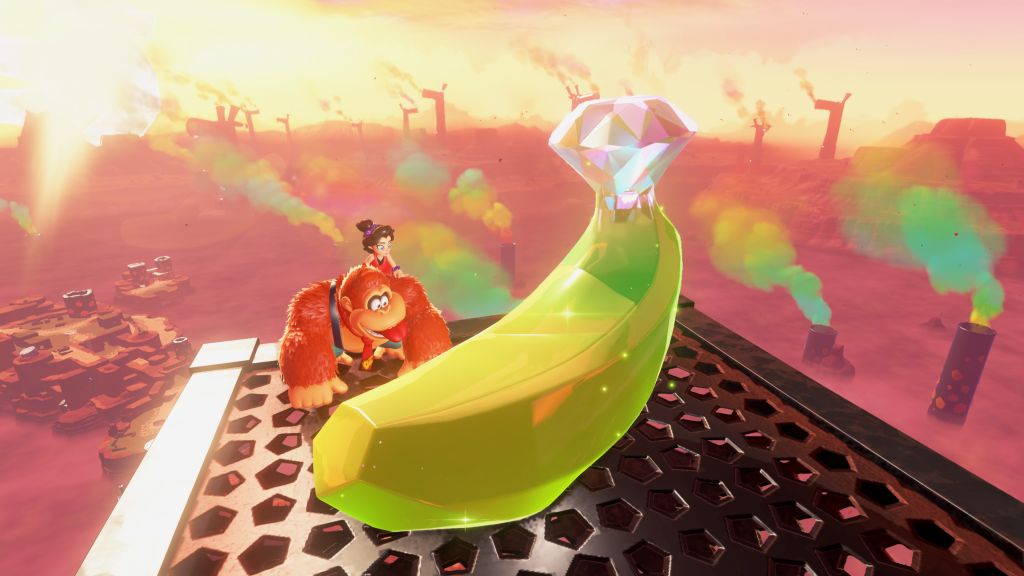
Pauline’s passion for singing played a big part in Super Mario Odyssey; not only did it give the game one of its most memorable songs, but it also helped redefine Pauline and set her apart from characters like Peach and Daisy. There have been a lot of questions about when Donkey Kong Bananza takes place, but it seems likely that this is the start of Pauline’s journey, as she initially shows some hesitation about singing in front of other people. That quickly changes, as her singing helps Donkey Kong perform musical Bananzas, which trigger new transformations. Two of these transformations were shown during my hands-on session: Kong Bananza and Ostrich Bananza.
Bananza transformations grant Donkey Kong new abilities for a limited amount of time. The Kong Bananza makes DK bigger, faster, and stronger, too. Meanwhile, the Ostrich Bananza gives him the ability to briefly fly and glide. So far, it’s a little hard to get a good grasp on the transformations. They do add an interesting new element to the game, as well as some unique designs. However, without getting a chance to use them in a boss fight or something similar, it’s hard to say just how much they’ll add to the game. Right now, they largely feel like a replacement for the animal friends that appeared in the SNES trilogy. The biggest difference is that the Bananza forms have skills that can be upgraded over time, as does DK’s standard form.
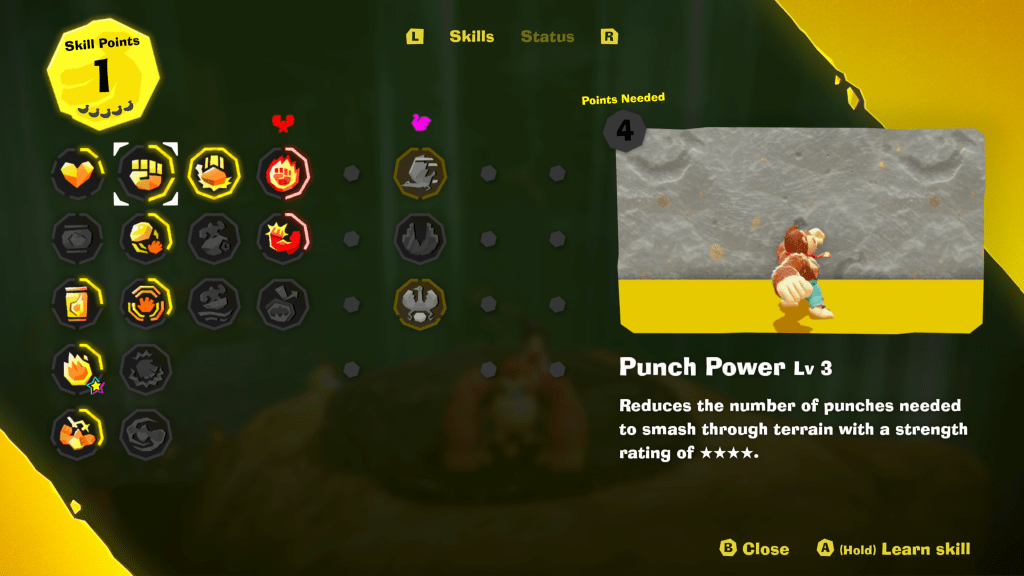
Throughout Donkey Kong Bananza, the big ape will be rewarded with Skill Points, which can be used to upgrade various abilities. Players will have to decide for themselves which skills most benefit from the boost, but players can make DK’s punches more powerful, his Bananza transformations last longer, and improve his number of hearts. Speaking of hearts, players will find locations where they can create makeshift homes for DK and Pauline to sleep and recover hearts, while also gaining a temporary extra (this heart appears in yellow, rather than the standard red). Sleep time also provides some strong character moments, as Pauline shares her feelings and concerns with a dozing Donkey Kong.
Pauline’s singing isn’t just tied to transformations, as it also plays a key role in the game’s two-player mode. The mode can be used in Donkey Kong Bananza with a Joy-Con controller in mouse mode. Her voice can be used to create Vocal Blasts, in which words appear on screen that damage foes, and even the environment itself. Vocal Blasts can also take on the properties of different rock types found in the game’s world, and can be used to create platforms that DK can jump on. Rapid-firing Pauline’s attacks can cause things to get chaotic quickly, but the mode worked well, and it helped showcase how the game is taking advantage of Nintendo Switch 2’s processing power. The overall result seemed a lot more robust and enjoyable than the two-player option in Super Mario Odyssey.

In addition to the standard 3D areas DK and Pauline will have to navigate throughout Donkey Kong Bananza, the game features several Challenge Courses in which players can try to earn Banandium Gems. These Challenge Courses each have different obstacles to overcome. Some focus on taking out a set number of foes before a timer runs out, while others put an emphasis on destroying part of the environment. So far, the Challenge Courses seem to add a lot of variety to the game, while also showcasing tasks designed to make the player think. There’s a lot of similarity to Super Mario Odyssey in that regard, though there is the added challenge of figuring out when to destroy parts of the environment, and when not to. For example, Big-Wheel Balloon Hunt has a giant moving wheel that’s fully destructible, but knocking out the wrong part or causing too much destruction can make it impossible to complete.
Of the Challenge Courses presented so far, my personal favorite has been Bramble Country, a throwback challenge meant to evoke the barrel-hopping stages that were prevalent throughout the Donkey Kong Country games. Getting all three Banandium Gems in the course proved to be a difficult task, as DK had to avoid blasting into thorns or enemies in his path. On top of the throwback gameplay, the challenge also brought back Stickerbrush Symphony, one of the most beloved tracks from Donkey Kong Country 2. While David Wise is not involved in Donkey Kong Bananza, it’s clear that his impressive legacy has not been forgotten.

Though it failed to overshadow Mario Kart World and Metroid Prime 4: Beyond for me earlier this year, the more I play Donkey Kong Bananza and discover what it has to offer, the more it feels like Nintendo has something truly special on the way. The game feels like a legitimate successor to Super Mario Odyssey, but it still maintains the elements that made the SNES Donkey Kong Country games feel so special. It’s great to see Nintendo doing right by one of its oldest icons, and I’m eager to see how it all comes together when the game arrives on July 17th.
Are you planning to check out Donkey Kong Bananza next month? What do you think of the game so far? Share your thoughts with me directly on Bluesky at @Marcdachamp, or on Instagram at @Dachampgaming!
The post Playing Donkey Kong Bananza Makes Me Believe It Will Be DK’s Best Game in 30 Years appeared first on ComicBook.com.
